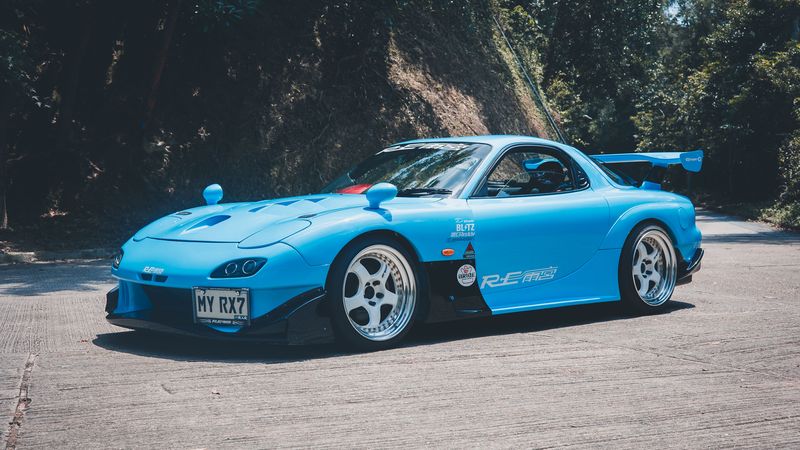Performance cars have always been a symbol of speed, engineering prowess, and driving passion. They ignite the imagination of car enthusiasts and represent the peak of automotive design in many cases.
However, the performance car market is a diverse industry, ranging from obscure models adored by niche communities to high-profile vehicles that garner widespread attention and massive marketing campaigns.
What is fascinating is how some lesser-known performance cars manage to maintain a strong reputation for reliability and durability over time, even as some headline-grabbing, high-profile models become notorious for mechanical or electronic issues.
This dynamic challenges common assumptions about performance cars and underscores the importance of engineering choices beyond raw power or styling.
When people think about performance cars, flashy models with powerful engines and impressive specifications often come to mind. These cars grab headlines with their speed records and exotic features.
Yet, owning a performance car is about more than just speed; it’s about the entire ownership experience, including how well the car holds up through daily use, maintenance demands, and long-term reliability.
Many enthusiasts eventually discover that some of the most reliable and enjoyable performance vehicles are not the ones with the biggest marketing budgets but those that focus on proven mechanical systems and careful engineering.
The contrast between obscure performance models that have staying power and high-profile models known for frequent issues is striking.
Obscure models tend to emphasize simplicity, balanced performance, and mechanical robustness. They attract enthusiasts who appreciate the driving experience without being bogged down by costly repairs or complex electronic systems that can fail.
These cars often have a devoted following that keeps their legacy alive, even if they never reached mainstream stardom. Their reputation for reliability and driving purity often increases their value and desirability over time.
In contrast, some high-profile performance cars struggle with reliability despite their initial appeal and technological advancements. These vehicles may include complex turbocharged engines, sophisticated all-wheel-drive systems, or a multitude of electronics designed to enhance performance and comfort.
Unfortunately, these innovations sometimes lead to unexpected failures, high repair costs, or tedious maintenance routines that dampen the ownership experience. The high cost of fixing issues and the frustration of dealing with persistent problems can quickly tarnish a car’s reputation and turn buyers away.
This article takes a close look at five obscure performance models that have earned their place in the hearts of enthusiasts for their longevity and dependable performance. It will then compare them with five well-known, high-profile performance vehicles that have gained notoriety for breaking down or requiring expensive upkeep.
By examining these two groups side by side, readers will gain insight into what factors contribute to a performance car’s lasting value and which pitfalls can undermine even the most celebrated vehicles.
Whether you are considering purchasing a performance car or simply curious about the nuances of automotive engineering, this comparison sheds light on the important relationship between reliability, engineering philosophy, and the driving experience.
Also Read: 5 Cars with Lifetime Catalytic Converters vs 5 with Early CAT Failures
5 Obscure Performance Models With Staying Power

1. Acura Integra Type R (DC2)
The Acura Integra Type R is one of the most revered performance cars in the tuner and enthusiast communities, yet it never achieved the same mainstream fame as some of its Japanese rivals. What sets this model apart is the combination of a lightweight chassis, a highly responsive naturally aspirated engine, and precise handling.
The B18C engine is celebrated for its high-revving nature and reliability, providing spirited performance without excessive complexity.
This allowed owners to enjoy an engaging driving experience without constantly worrying about mechanical failures. The Integra Type R’s focus on simplicity and driver involvement helped it maintain a loyal following that values its balance and reliability.
Unlike many performance cars from the late 1990s and early 2000s that pursued turbocharging or more exotic technology, the Integra Type R stuck with proven mechanical systems. This focus on refinement rather than cutting-edge tech contributed to its long-term durability.
The suspension geometry was carefully tuned for responsiveness and feedback, which, combined with the relatively light weight, made the car feel alive and agile.
Owners frequently report that even after many years and miles, these cars continue to deliver the same sharp handling they had when new. Its durability and reputation have resulted in high demand among collectors and enthusiasts, pushing values steadily upward.
Maintenance on the Integra Type R is generally straightforward and affordable compared to other performance models from the era. Many owners find that the parts are still readily available, and the engines respond well to regular upkeep. The absence of turbochargers, complex electronics, or exotic materials means fewer things to break down over time.
This reliability combined with a well-engineered chassis explains why the Integra Type R remains a beloved performance car more than two decades after production ceased. Its staying power is a testament to Honda’s engineering philosophy at the time: performance through simplicity and quality.
Finally, the Integra Type R has also aged well in terms of driver engagement. Its analog feel, lack of driver aids, and communicative steering continue to attract purists who prefer a raw driving experience. This contrasts with many modern performance cars that rely heavily on electronic intervention to mask their limitations.
The Integra Type R’s balance of accessible power, mechanical reliability, and rewarding handling make it a standout among performance cars that have withstood the test of time.
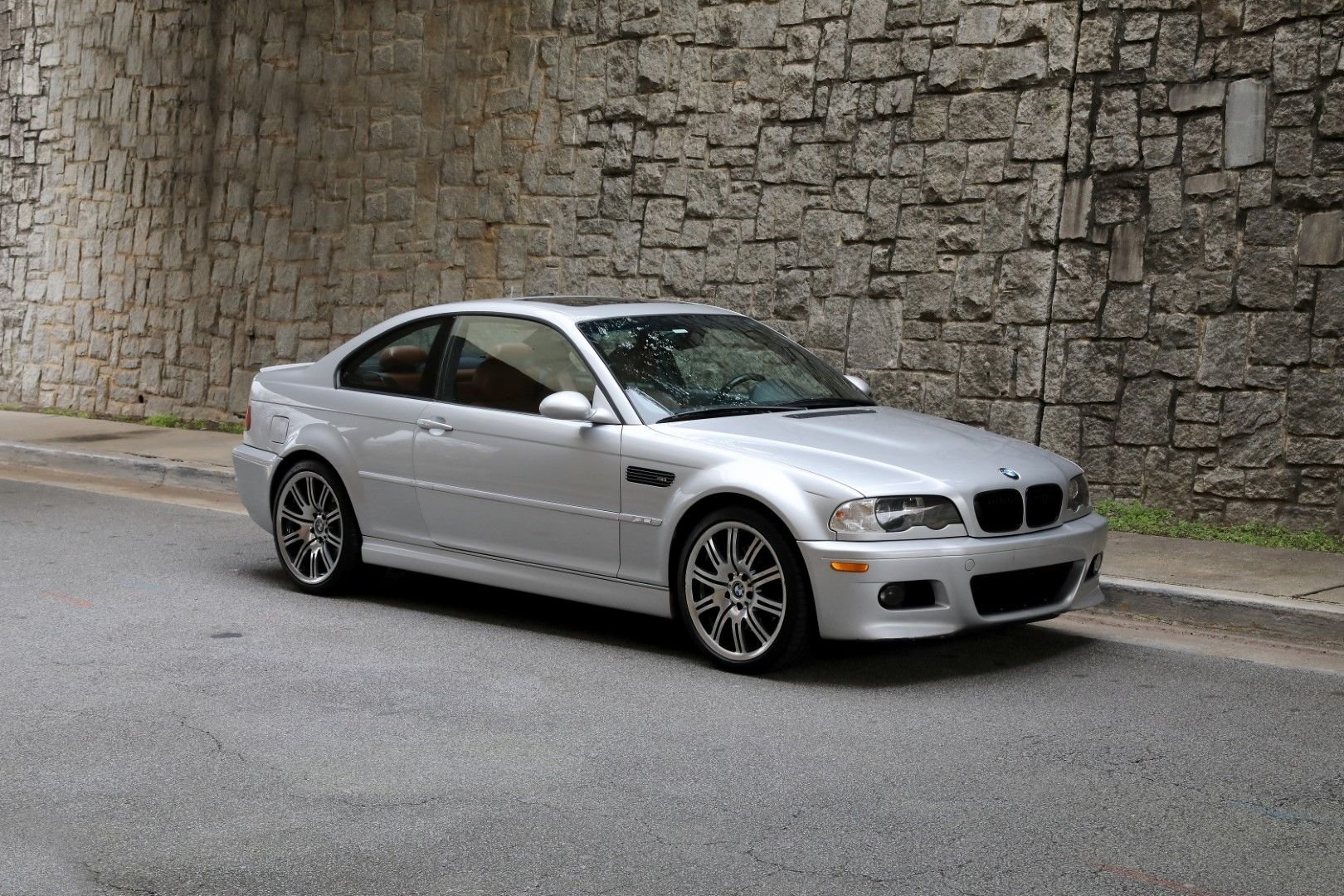
2. BMW E46 M3
The BMW E46 M3 is often overshadowed by its successor, the E92, or by newer models boasting more horsepower and technology. However, this generation of M3 has proven to be a durable and enjoyable sports car that many owners cherish for its mechanical simplicity and robust engineering.
The naturally aspirated S54 engine is known for its high-revving character, solid construction, and reasonable reliability when maintained correctly. The E46 M3’s balanced chassis and well-calibrated suspension provide drivers with an intuitive connection to the road that remains compelling even today.
One of the reasons the E46 M3 has staying power is its mechanical straightforwardness compared to newer BMW models. While it includes modern amenities and performance upgrades, the E46’s design avoids overly complex electronics that can plague later cars with costly repairs.
Common issues such as subframe cracks or VANOS unit wear are well-documented but manageable with preventative maintenance. Owners who stay on top of these known weak points often find the car can deliver years of spirited driving without major interruptions.
The E46 M3’s versatility also contributes to its enduring popularity. It is as comfortable cruising on highways as it is attacking winding back roads or the occasional track day.
This adaptability, paired with a timeless design, keeps it relevant in enthusiast circles. Compared to some more exotic and fragile performance cars, the E46 strikes a balance between performance and reliability that has earned it respect and admiration.
Lastly, the E46 M3’s aftermarket support remains strong, allowing owners to maintain and modify their vehicles with confidence. The availability of performance parts, replacement components, and tuning options means owners can keep their cars fresh and capable well beyond the original factory specifications.
This combination of reliability, mechanical purity, and upgrade potential explains why the E46 M3 remains a favorite among performance enthusiasts worldwide.
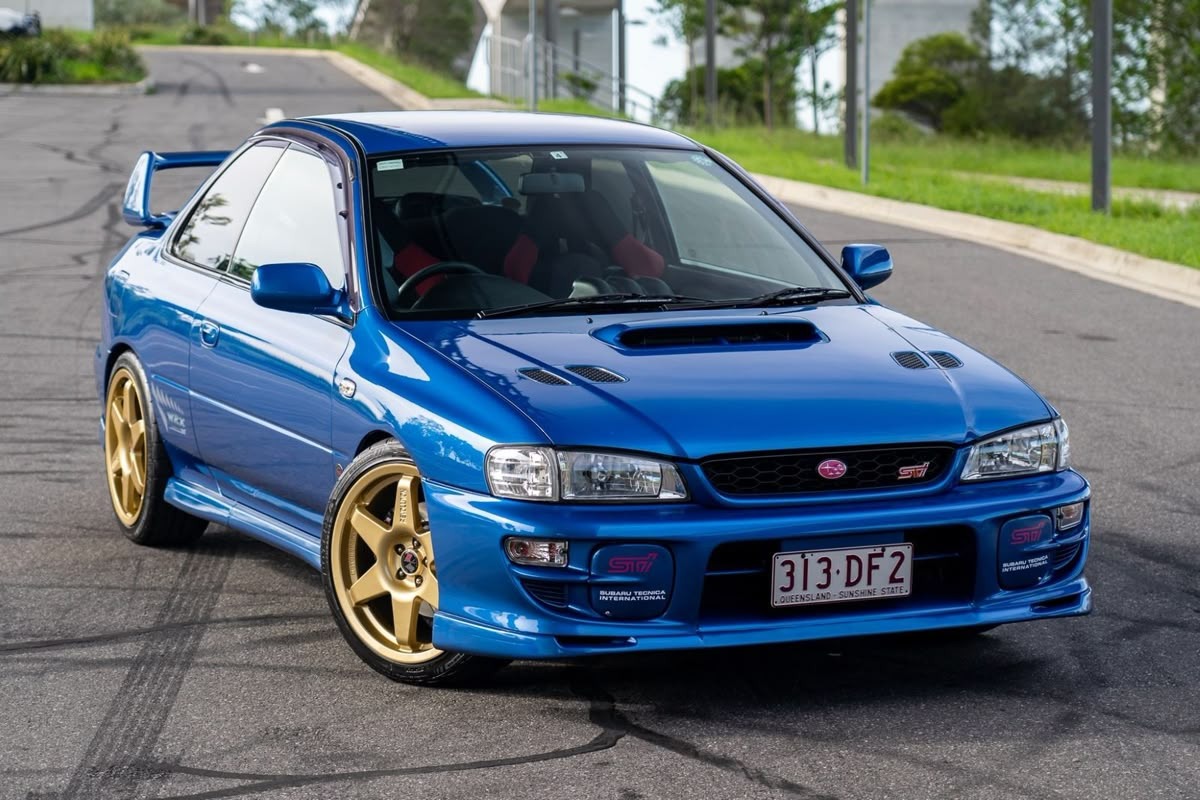
3. Subaru WRX STI (GD chassis)
The Subaru WRX STI of the GD chassis generation is often overshadowed by the newer, flashier STI models, yet it retains a strong reputation for being a rugged, reliable, and capable performance car.
Known for its turbocharged boxer engine and symmetrical all-wheel-drive system, this generation provided excellent grip, responsive handling, and a practical yet thrilling driving experience.
While some Subaru models have gained a reputation for head gasket issues or turbo failures, the GD STI, when cared for, is often praised for its robustness and longevity.
One reason this STI model has staying power is the relative simplicity of its mechanical design combined with strong aftermarket support. Many owners have found that with routine maintenance and occasional rebuilds, these cars can continue delivering powerful, reliable performance for hundreds of thousands of miles.
The engine’s boxer layout also lowers the center of gravity, improving handling without compromising durability. Unlike many turbocharged performance cars that are prone to heat-related issues, the GD STI was engineered with effective cooling systems to withstand aggressive driving.
The STI’s all-wheel-drive system is another key contributor to its lasting appeal. The symmetrical AWD layout provides predictable and stable traction in all conditions, making it a favorite for those who live in regions with challenging weather or rough roads.
This capability does not come at the expense of performance, as the car still offers a raw, connected driving experience that appeals to enthusiasts. The durability of this drivetrain system sets the GD STI apart from more fragile all-wheel-drive sports cars that may struggle under high stress.
Finally, the GD STI’s practical nature makes it a reliable daily driver as well as a weekend performance car. Its comfortable interior, decent fuel economy for its class, and solid build quality mean owners don’t have to sacrifice comfort for speed.
This combination of practicality, toughness, and performance has kept the GD STI in high regard and preserved its relevance despite the arrival of newer models.

4. Mazda RX-7 FD3S
The Mazda RX-7 FD3S is often celebrated for its unique rotary engine and stunning handling, yet it remains an obscure choice for many due to concerns about reliability and maintenance costs. However, for those who approach the RX-7 with proper care, this car can be a lasting and rewarding performance machine.
The rotary engine’s design inherently requires more diligent upkeep, but when maintained, the lightweight chassis and balanced dynamics create a driver-focused experience that few other cars can match.
One of the FD3S’s most attributes is its balanced weight distribution and low center of gravity, achieved through Mazda’s engineering philosophy of “Jinba Ittai” or horse and rider as one. This focus on harmony between car and driver delivers exceptional agility and responsiveness that remain impressive today.
While the rotary engine is often considered a maintenance challenge, owners who invest in regular rebuilds and proper tuning often find the RX-7 FD3S can provide consistent, high-level performance over many years.
Another reason the RX-7 FD3S enjoys staying power is the relative simplicity of its suspension and chassis design. Unlike more complex performance cars loaded with electronic aids, the FD3S relies on mechanical grip and driver skill, which translates to fewer electronic parts that could fail.
This mechanical purity appeals to enthusiasts who prefer an analog experience without the frustration of electronics breaking down. As a result, many RX-7s have survived with well-preserved driving dynamics.
The RX-7 FD3S also benefits from a strong enthusiast community that provides support, parts, and expertise. This network helps owners maintain and restore these cars, contributing to their longevity.
While not as mainstream as other performance models, the RX-7 FD3S remains a beloved choice for those who prioritize driving excitement and mechanical purity, making it a rare example of an obscure performance car with lasting appeal.
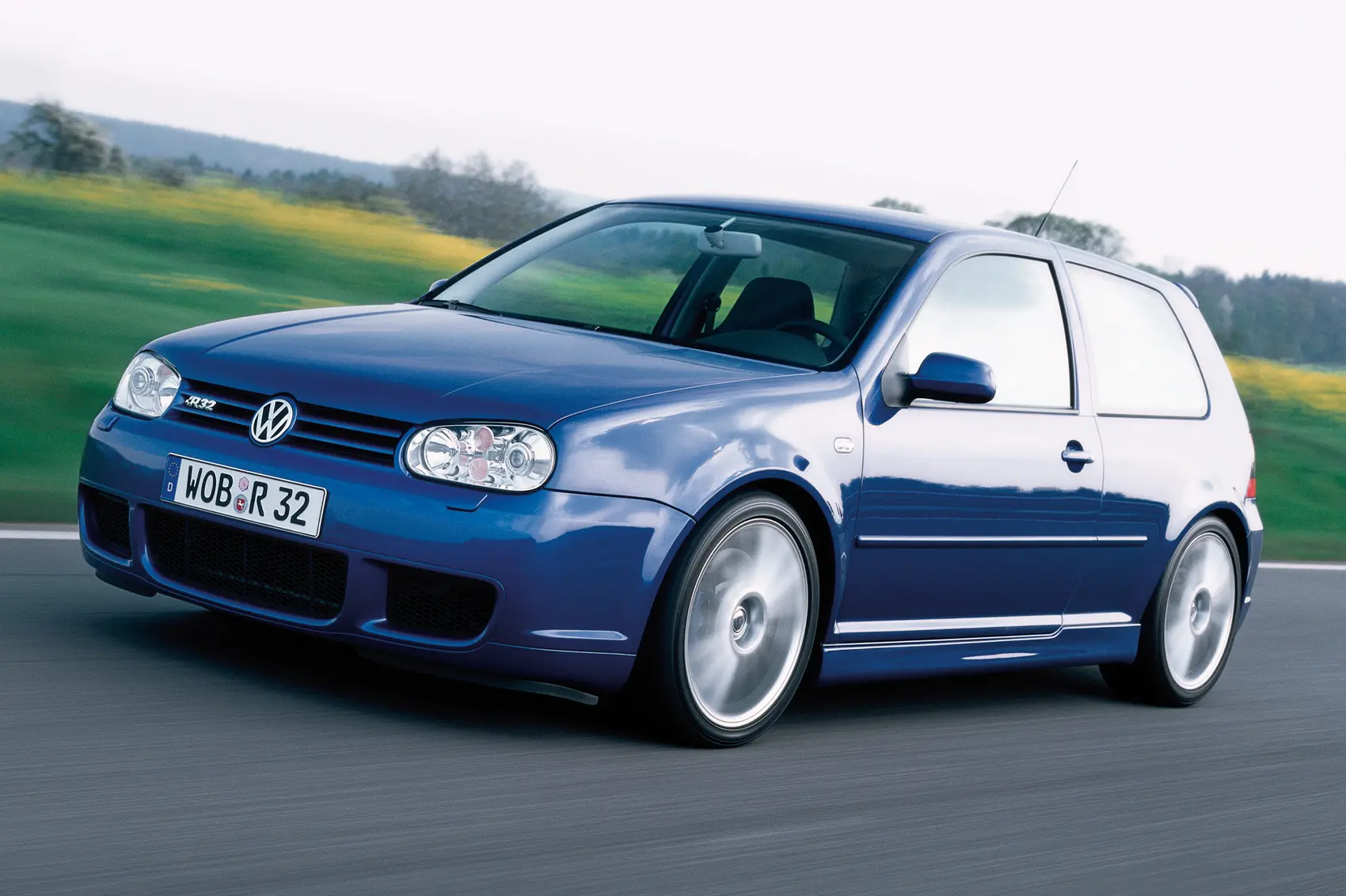
5. Volkswagen Golf R32 (Mk4)
The Volkswagen Golf R32 Mk4 is a somewhat overlooked performance car that offers a blend of practicality, refinement, and reliable performance. Powered by a naturally aspirated VR6 engine paired with Volkswagen’s 4Motion all-wheel-drive system, the R32 delivered solid power and traction in a compact, everyday-friendly package.
Although overshadowed by later Golf R versions and more aggressive hot hatches, the R32 Mk4 has earned a reputation for being a dependable and enjoyable car that handles daily driving and spirited runs with equal ease.
A significant factor in the R32’s staying power is the VR6 engine’s robust construction. The engine provides a smooth power band and good torque without the added complexity of forced induction, which can be a source of problems in many turbocharged cars.
The naturally aspirated design generally results in fewer heat-related issues and lower maintenance costs. When maintained properly, the VR6 and the R32’s drivetrain have proven to be durable, often outlasting many competitors from the same era.
Additionally, the R32’s 4Motion all-wheel-drive system is known for its reliability and effectiveness. This system offers excellent grip in varying conditions, enhancing safety and performance. Unlike some AWD systems that are overly complex, Volkswagen’s system is relatively simple and durable.
Many owners report few major issues with the drivetrain, which is crucial for a performance car intended for everyday use. The balance between traction, power delivery, and mechanical robustness contributes greatly to the R32’s long-term appeal.
Finally, the R32’s understated styling and comfortable interior make it a practical yet sporty choice. It is not flashy or overly aggressive, which has helped it avoid the pitfalls of hype-driven depreciation.
Enthusiasts who value a balanced package with solid build quality and reliable performance often turn to the R32 as a hidden gem. Its combination of durability, all-weather capability, and engaging driving character secures its place among obscure performance cars with staying power.
5 High-Profile Models That Break
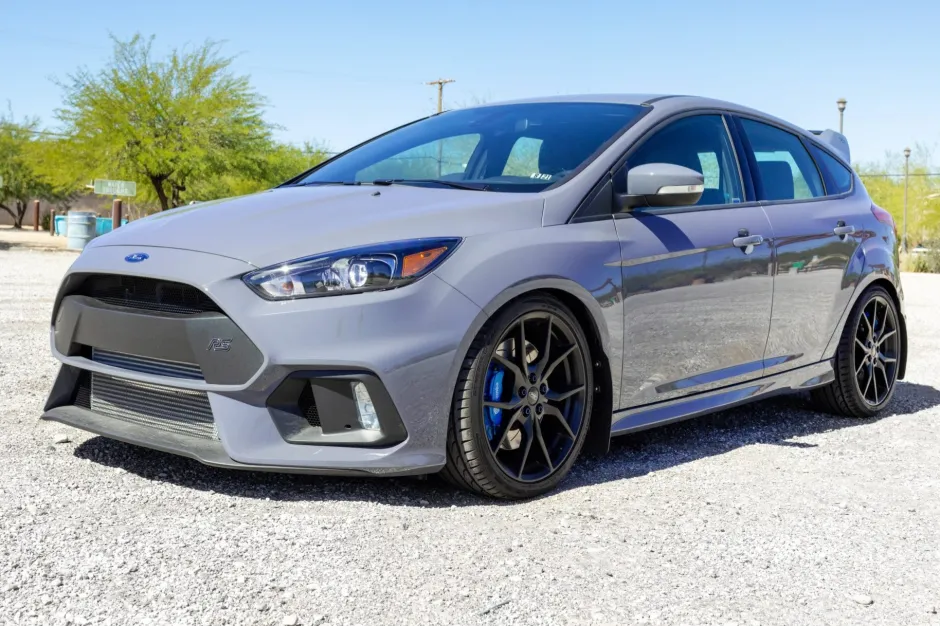
1. Ford Focus RS (Mk2)
The second-generation Ford Focus RS gained attention for its aggressive styling, turbocharged five-cylinder engine, and all-wheel-drive system that promised thrilling performance. However, despite its popularity, the Mk2 Focus RS developed a reputation for reliability problems and costly repairs.
Owners frequently report issues with the turbocharger, clutch, and drivetrain components that can fail prematurely. These problems not only diminish the car’s appeal but also increase maintenance expenses, making ownership more challenging.
One major source of trouble is the turbocharged 2.5-liter five-cylinder engine, which was pushed hard to deliver significant power. This stress often resulted in premature wear of key components such as pistons and connecting rods.
Additionally, the turbo system itself is complex, with parts that can overheat or fail if not properly maintained. Many owners found themselves dealing with turbo failures or related problems well before the expected lifespan of the vehicle, reducing confidence in its long-term durability.
The Focus RS’s all-wheel-drive system, while advanced, also contributed to reliability woes. The drivetrain’s multiple components, including the limited-slip differential and clutch packs, are prone to wear under aggressive driving conditions.
Repairs or replacements of these parts are often expensive, further adding to ownership costs. These issues mean the Mk2 Focus RS does not have the same reputation for staying power as some less flashy, more mechanically simple performance cars.
Finally, the build quality and parts longevity on the Mk2 Focus RS lagged behind competitors. Electronics and sensors sometimes failed prematurely, and the suspension components wore out quickly with spirited driving.
These factors combined to create a car that, while exciting to drive initially, often proved frustrating for owners seeking reliable performance. As a result, many enthusiasts have turned away from the Mk2 Focus RS when considering long-term ownership.
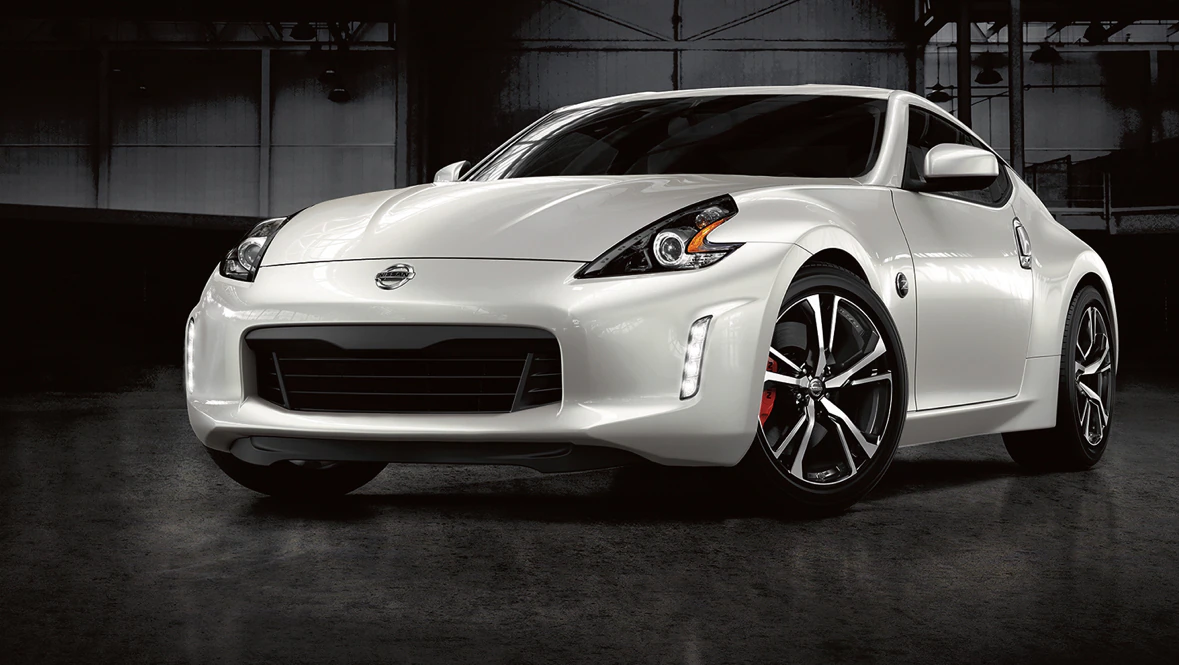
2. Nissan 370Z
The Nissan 370Z, despite its sporty design and solid performance credentials, has faced criticism for various reliability issues that can affect owners over time.
While the 370Z offers strong naturally aspirated V6 power and a rear-wheel-drive layout that appeals to purists, some of its mechanical and electrical components have shown weaknesses. Reports of transmission problems, especially with the automatic variant, and suspension issues have marred the 370Z’s reputation.
One persistent problem in the 370Z is transmission reliability. Automatic transmissions sometimes suffer from premature wear or failure, requiring costly repairs or replacements. Manual transmissions, while generally more reliable, occasionally exhibit clutch and synchro issues.
These drivetrain problems are significant for a performance car because they directly affect drivability and ownership satisfaction. The cost and frequency of these repairs detract from the car’s appeal.
The suspension on the 370Z also draws criticism for components that may wear prematurely under aggressive use. Bushings, control arms, and shocks often require replacement sooner than expected.
This can compromise handling sharpness and increase maintenance costs. While the car is designed to provide engaging driving dynamics, these reliability concerns create a disconnect between the performance promise and practical ownership.
Electrical issues have also surfaced with the 370Z, including problems with sensors, infotainment systems, and wiring. These faults contribute to frustration and may increase repair expenses.
Taken together, the 370Z’s combination of mechanical and electronic weaknesses contrasts with some lesser-known performance cars that prioritize reliability alongside performance.
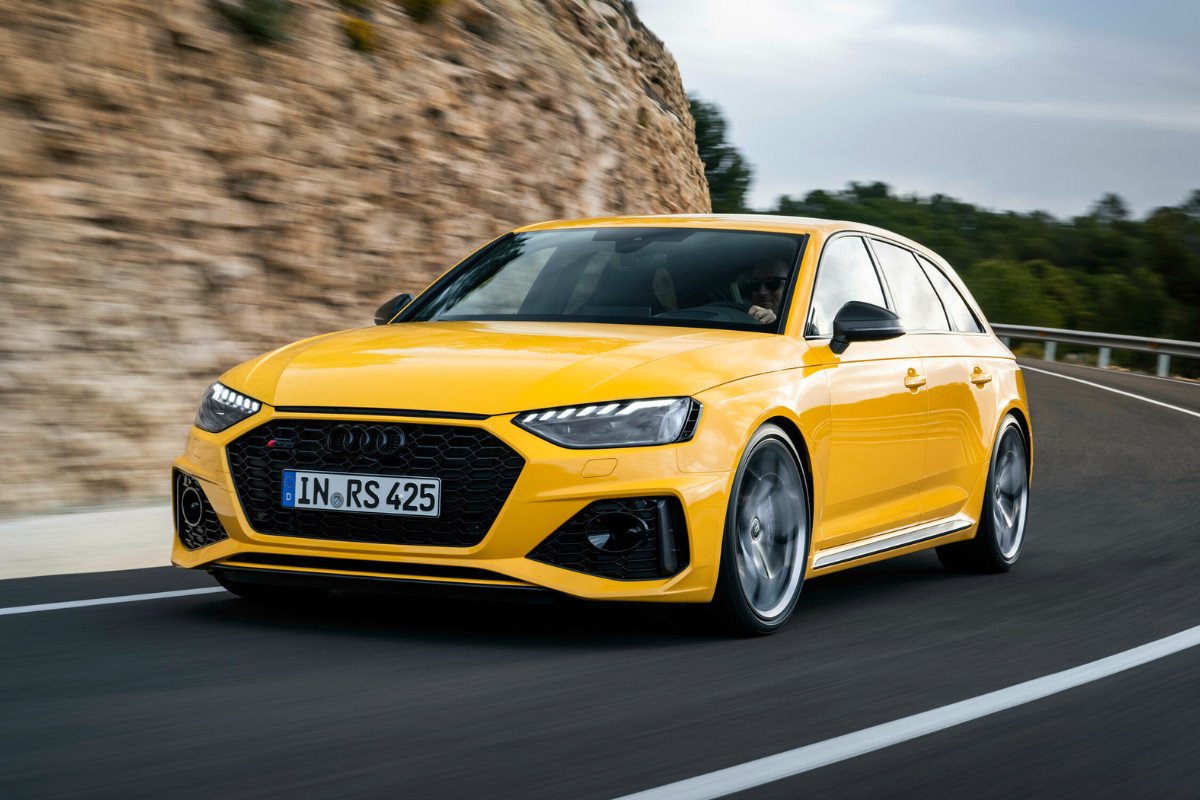
3. Audi RS4 B7
The Audi RS4 B7 is a high-profile performance sedan celebrated for its naturally aspirated V8 engine and quattro all-wheel-drive system. However, the RS4 B7 has become known for a range of reliability challenges that can turn ownership into an expensive proposition.
Key issues include carbon buildup in the direct injection system, high oil consumption, and problems with the timing chain tensioners, all of which require careful maintenance and can lead to costly repairs.
One of the RS4 B7’s most notorious problems is the carbon buildup on intake valves, common in direct injection engines. This buildup affects performance, fuel economy, and engine smoothness, and cleaning it is labor-intensive and expensive.
Owners who neglect this maintenance often experience power loss and rough idling, which diminishes the car’s driving appeal. This issue highlights how advanced technology, while offering performance benefits, can introduce new reliability concerns.
The timing chain tensioner problem is another costly concern for the RS4 B7. Failure of these components can result in catastrophic engine damage, necessitating a full rebuild.
Audi enthusiasts often recommend preemptive replacement of tensioners to avoid this risk, adding to maintenance costs. The RS4’s high-revving V8 also demands frequent oil changes and premium lubricants to manage oil consumption and prevent engine wear.
Additionally, the complex quattro AWD system involves numerous components that may wear prematurely, such as differentials and transfer case parts.
Repair or replacement of these parts is expensive and often unavoidable on higher-mileage cars. Combined with the car’s sophisticated electronics and luxury features, the RS4 B7’s reliability challenges detract from its initial appeal as a bulletproof performance sedan.
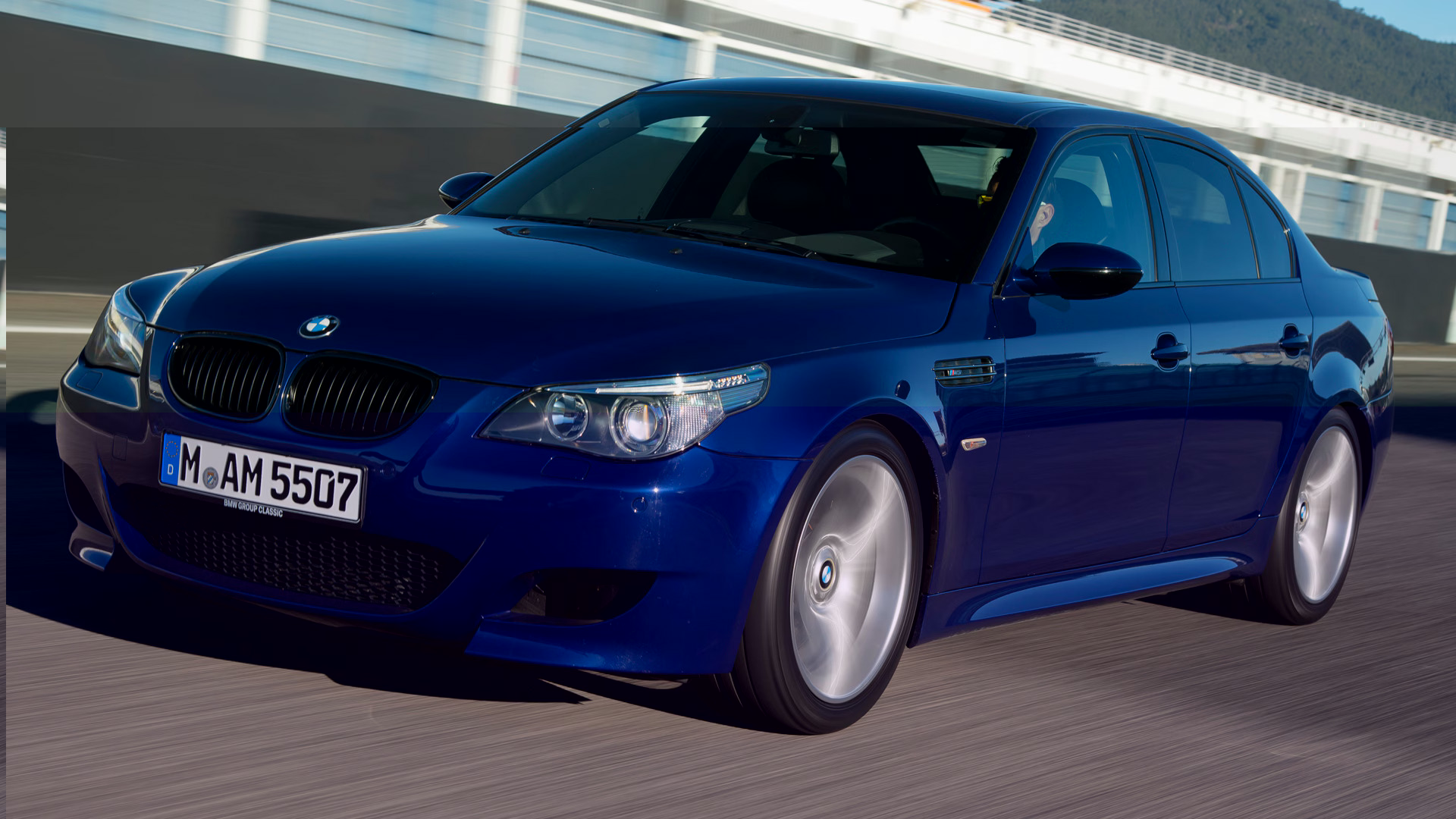
4. BMW M5 E60
The E60 generation BMW M5 is a technological tour de force featuring a high-revving V10 engine and a host of electronic driver aids. While the M5 E60 delivers breathtaking performance and distinctive styling, it is notorious for reliability problems and high maintenance costs.
The V10 engine, known as the S85, is complex and requires meticulous care to avoid issues such as rod bearing failures and fuel system problems. Rod bearing failure is a critical concern for the E60 M5, with many cars experiencing this problem within the first 60,000 to 80,000 miles.
Failure of rod bearings can cause catastrophic engine damage, often requiring a complete rebuild. This issue has become one of the defining characteristics of the E60 M5’s reliability reputation and deters many buyers. Maintenance and preventative replacement of these components is essential but expensive.
The S85 engine also requires frequent oil changes with high-quality synthetic oil to maintain reliability. Ignoring maintenance schedules can accelerate wear and increase the likelihood of major failures.
Additionally, the E60 M5’s complex electronics, including the SMG transmission system and numerous sensors, are prone to faults that are costly to diagnose and repair. The intricate engineering that makes the M5 a technological marvel also creates numerous points of failure.
Suspension components and cooling systems on the E60 M5 are also known to wear out relatively quickly, adding to the cost of ownership. These combined factors mean the E60 M5 is better suited to enthusiasts with deep pockets and a willingness to invest in ongoing maintenance rather than buyers seeking a reliable daily driver.

5. Mercedes-Benz SL55 AMG (R230)
The Mercedes-Benz SL55 AMG of the R230 generation is a high-profile luxury performance convertible that combines powerful V8 performance with refined features.
However, it has developed a reputation for reliability and electrical issues that complicate ownership. Despite its impressive performance and comfort, the SL55 AMG can suffer from premature component failures, especially in electronics and suspension systems.
One common problem in the SL55 AMG is the frequent failure of the Active Body Control (ABC) hydraulic suspension system. While ABC delivers superior ride quality and handling, it is complex and expensive to maintain.
Hydraulic leaks, pump failures, and worn accumulators are common and can lead to costly repairs that some owners find prohibitive. This system’s complexity is a prime example of how advanced technology in high-profile performance cars can create reliability headaches.
Electrical gremlins also plague the SL55 AMG, with frequent failures in control modules, wiring harnesses, and sensor systems.
These problems can cause issues ranging from minor annoyances to major system failures, affecting everything from lighting to convertible top operation. The cost and complexity of diagnosing these problems deter some owners from keeping the car long-term.
Additionally, the SL55 AMG’s supercharged V8, while robust, requires regular maintenance and premium fuel to maintain reliability. Neglected service can lead to early wear or performance degradation.
Combined with expensive brake and drivetrain components, the SL55 AMG’s ownership costs can escalate quickly. Despite its allure and performance, these reliability concerns mean it often struggles to maintain the same level of desirability as some simpler, more robust performance cars.
Also Read: 5 Cars with High-Flow Oil Pumps vs 5 with Stock Pumps That Overheat
Performance cars will always attract those who crave excitement and the thrill of speed, but owning one comes with the responsibility of understanding the vehicle’s engineering, maintenance needs, and long-term durability.
Through the comparison of five obscure performance models known for their staying power and five high-profile models prone to reliability issues, it becomes clear that the true measure of a performance car extends far beyond its horsepower or styling.
Durability, engineering simplicity, and quality build play critical roles in ensuring that a car remains enjoyable and dependable over many years.
The obscure models reviewed here demonstrate that a focus on proven mechanical components, straightforward engineering, and driver engagement can create a performance car with lasting appeal.
These vehicles may lack the media hype or flashy features of their more famous counterparts, but their enduring popularity among enthusiasts speaks volumes.
Whether it is the analog charm of the Acura Integra Type R, the balanced dynamics of the BMW E46 M3, or the rugged reliability of the Subaru WRX STI, these cars remind us that staying power often comes from solid fundamentals and thoughtful design rather than cutting-edge technology alone.
On the other side of the spectrum, the high-profile performance models examined reveal the challenges of balancing advanced engineering and reliability.
Cars like the Ford Focus RS Mk2 or the BMW M5 E60 push the limits of technology and performance, but sometimes at the cost of frequent repairs, high maintenance expenses, and owner frustration.
These vehicles highlight how complexity, whether in turbocharged engines, sophisticated drivetrain systems, or electronics, can introduce vulnerabilities. The ownership experience in these cases may be exciting initially but becomes burdened by concerns over reliability and cost.
This comparison offers important lessons for potential buyers and automotive enthusiasts alike. When choosing a performance car, it is essential to consider not only the thrill of acceleration or the prestige of a brand but also the practicality of long-term maintenance and durability.
The best performance cars blend exhilarating driving experiences with reliability, allowing owners to enjoy the full potential of their vehicles without constant worry.
Furthermore, this exploration challenges the notion that high-profile automatically means better quality. Some of the most reliable and engaging performance cars are those that fly under the radar, supported by passionate communities and simple, robust engineering.
These cars often reward their owners with decades of spirited driving and a stronger emotional connection. The true value of a performance car lies in its ability to combine excitement, reliability, and ownership satisfaction.
By understanding the strengths of obscure models with staying power and recognizing the pitfalls of some high-profile performance cars, enthusiasts can make more informed choices and appreciate the diverse automotive performance.
This knowledge enriches the experience of owning and driving a performance car, ensuring that the thrill lasts far beyond the showroom.

